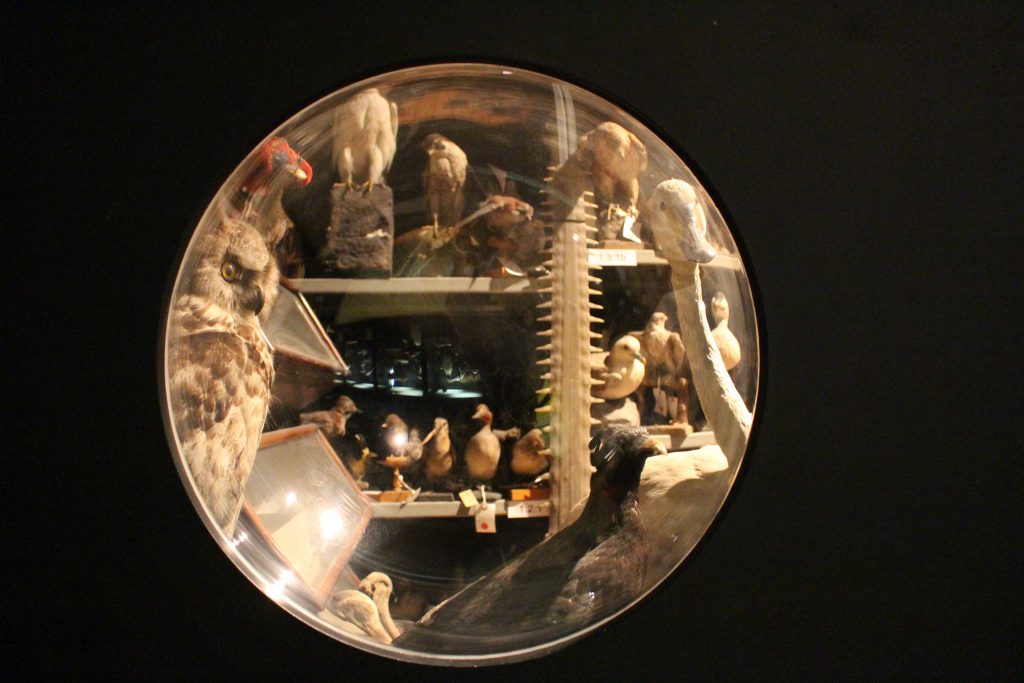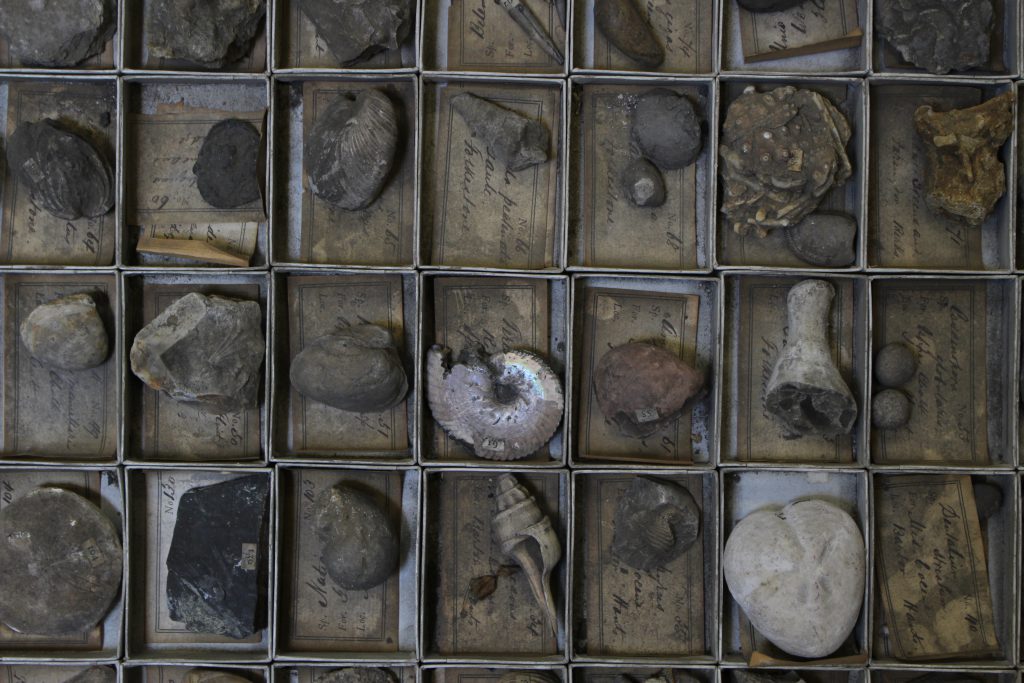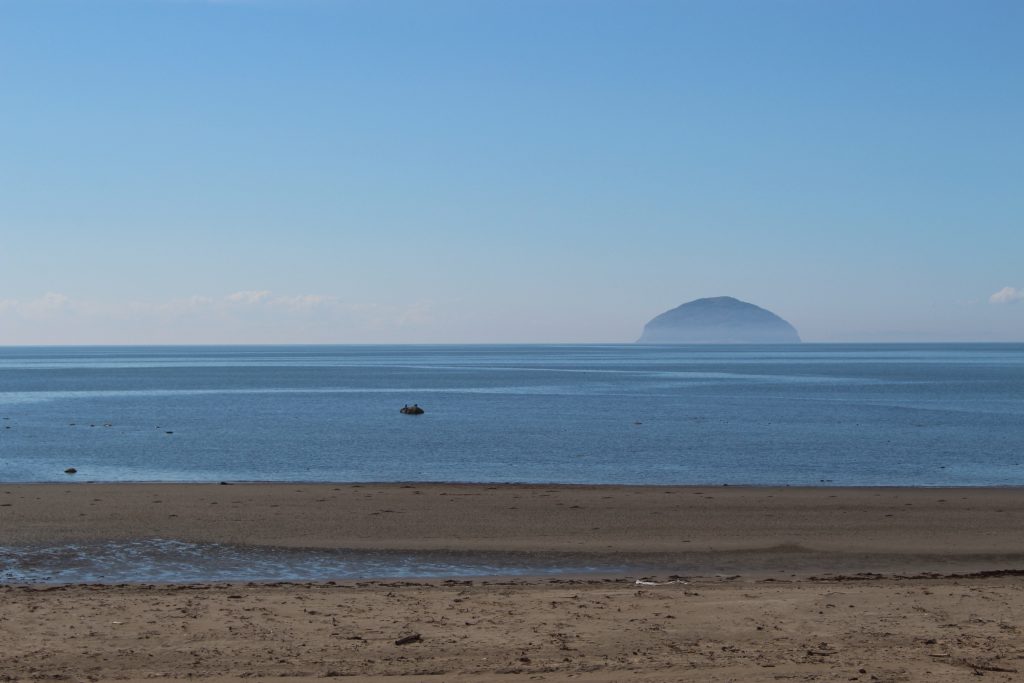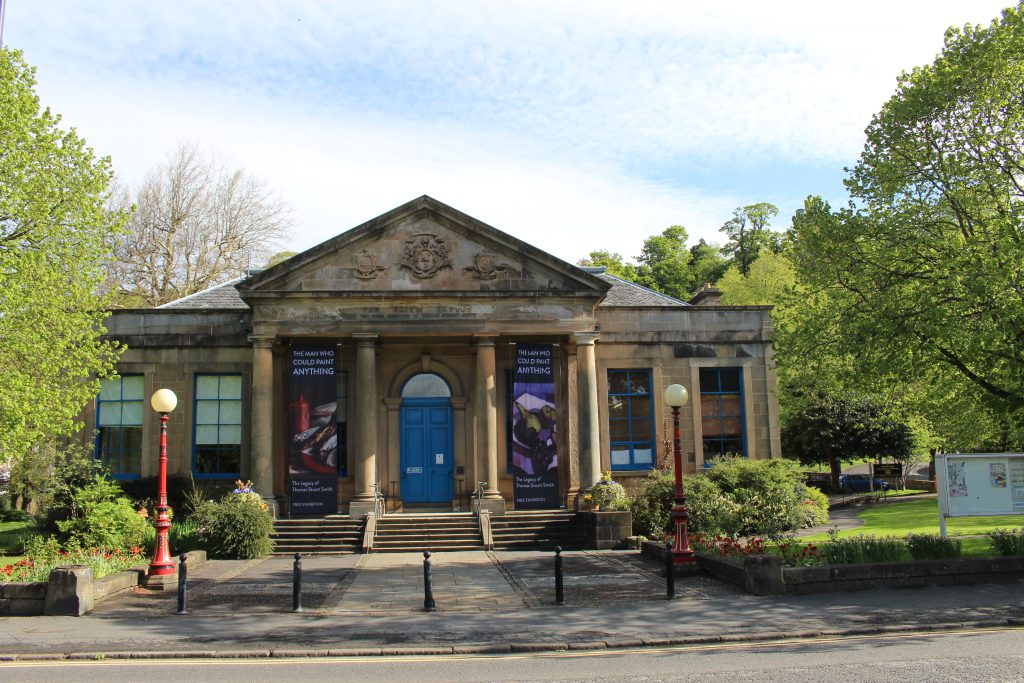As part of the John Ellerman project, I will be visiting museums across Scotland to review fossil and natural science collections.
Consultation with the Scottish museum sector, undertaken by National Museums Scotland, highlighted concerns around the care and use of fossil collections resulting from a lack of expertise and resources at local level. The project is investigating the type, storage and use of specimens in this subject area as well as other natural science material frequently found in the same collections. The research will be published in two reports which will provide evidence and recommendations for improvements in collections care and increased use, with the aim of increasing public engagement with natural science collections in museums across Scotland.
In late April 2019, the project took me to the Dick Institute in Kilmarnock. At a not-too-unreasonable hour I was on the train heading west from Waverley Station for a 9.30am start. The classical building was impressive on approach with a central portico and fluted columns, set among tall trees. Discussions beforehand had suggested there were lots of fossils and other natural science material, making it useful to tour the various rooms before deciding where to start the in-depth examination.

The displays, including natural history, had been temporarily condensed to accommodate the collections from Dean Castle, which was undergoing refurbishment, but there was a range of glass cabinets showing specimens from around the world with interesting information specific to each. I walked past the case holding Brian the Lion, a local ‘celebrity’ produced more than a hundred years ago by the well-known London taxidermist Roland Ward, and through a doorway arched by a complete whale jaw. I peered into a Perspex bubble in an otherwise black wall to see what was essentially a storeroom, filled with every type of natural history specimen imaginable: taxidermy birds, mammals and reptiles, insects, butterflies, sea shells, animal bones, a sawfish’s saw or rostrum, and a model of a long-necked dinosaur. Additional bubbles gave different views of the room and contents, one a little too close to a boxed tarantula for my liking, although I still returned several times to see what else I could see.

Behind the scenes, the fossil collection was organised taxonomically, that is, by the type of biological organism to which the remains belonged. As I opened drawers I came across gastropods (snails), ammonites and their relatives the belemnites and nautiloids, trilobites, insects, and the fossilised equivalents of modern sea urchins, brittle stars and corals, collected from all over the world. Relatively local, or at least from Scotland, were the fossils of fish: the big, sharp teeth of Rhizodus from the Carboniferous and the much older, smaller and rarer jawless fish Lasanius and Birkenia from the Silurian that had recently been studied as part of a university research project.

There were also fossils representing the bark, leaves, roots and seeds of plants that grew in the swamps of the Carboniferous, collected from the coal measures they formed during millions of years of burial deep underground. Around the same room were shelves of taxidermy: a kingfisher, red squirrel, hedgehog and kestrel among others, and trays of beetles, butterflies and moths, some up to several inches across.

As I was nearby, I headed over to Girvan and the McKechnie Institute and waited on the beach for opening time, where the pyramidal outcrop of Ailsa Craig was prominent in the middle of the Firth of Clyde. Inside the museum I was keen to look at the displays on the wildlife and history of the island. I also found a few fossils – Jurassic ammonites, a sea urchin, Carboniferous coral and fossil wood – in a glass cabinet with other rocks and minerals of interest. These were collected by Hew McCallum (1935-2017), a local man who had travelled to Canada for work, returning to the area later and walking the hills to investigate the geology.

My next visit, now into May, took me to the Stirling Smith Art Gallery and Museum. I said ‘hello’ to Oswald, the black and white museum cat, before knocking on the door. I spent a full day looking through drawers and boxes in the store to investigate the mixed contents of rocks, minerals and fossils, occasional plant seeds, pressed plants of the herbarium (botanical collection), boxes of bird eggs (including a carved ostrich egg) and taxidermy displayed in glass cases or hidden in cardboard boxes, the contents of which were only apparent from the writing on the outside. Many boxes were beyond my reach and it was impossible to see everything.

By comparison, my investigation of natural science on display was brief; a fruit bat, a hundred-year-old moose head, and a whale vertebra and several ribs. The whale bones were interesting because they had been found in the Forth Valley, well above current sea level. They may have been dropped there when sea level was higher in the Ice Age or carried by a tidal wave caused by a landslide on the Norwegian Coast in 5000 BC. I continued to search the displays for further natural science objects, finding nothing else that could be included in the review. What I did see was the world’s oldest football, found in Stirling Castle and dated to the time of Mary, Queen of Scots, a unique object highlighting the variety of other subject material I was seeing on my tour of collections.
The fossils I found covered a wide range of geological ages and geographic localities, the sort of collections that would be used for reference by any collector wanting to identify their own finds. With plenty more collections to investigate I am still hopeful of further unusual and unique objects, in both the fossil and natural science material that are my focus and in the other collections I will see in passing. Maybe I will find a complete reptile fossil (always on my wish list), a fossil animal new to science – or even another rare example of historic sport memorabilia.
Find out more about the project and see a map of the museums visited so far at: The John Ellerman Project
